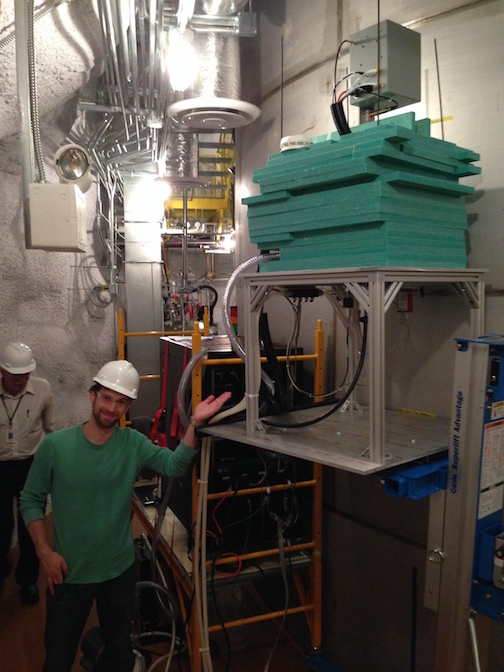Calibrating the LUX Dark Matter Experiment
My Ph.D. work on the LUX Dark Matter Experiment
Dark matter comprises five-sixths of the mass of the universe, but–despite significant effort by the global physics community over the past 30 years–it has yet to be directly observed. The Large Underground Xenon (LUX) dark matter experiment is a particle detector with a 1/3 tonne liquid xenon target located one mile underground at the Sanford Underground Research Facility in Lead, SD. The LUX experiment is currently the world’s most sensitive experiment searching for a theoretically favored form of dark matter called Weakly Interacting Massive Particles (WIMPs). It is critical to understand and calibrate the response of the detector to demonstrate that WIMP signals would be visible in the data.
For my Ph.D. thesis, I led the experimental design, operation, and data analysis effort for a new, world-leading calibration of the response of liquid xenon to WIMP-like signals. My dissertation defense slides are available here.
 Here I am with the neutron source used for the calibration the LUX dark matter detector.
Here I am with the neutron source used for the calibration the LUX dark matter detector.
As a direct result of this calibration, the already unrivaled sensitivity of LUX improved by a factor of ×7 for low-mass WIMPs–a hotly contested type of dark matter within the physics community over the past several years. Due to this success, the technique is now a core component of the next-generation LZ dark matter experiment (10 tonne liquid xenon target) calibration program. You can read the technical details in two academic papers based upon my Ph.D. thesis:
- Low-energy (0.7-74 keV) nuclear recoil calibration of the LUX dark matter experiment using D-D neutron scattering kinematics
- Proposed low-energy absolute calibration of nuclear recoils in a dual-phase noble element TPC using D-D neutron scattering kinematics
Links to news articles about my Ph.D. thesis work
- http://phys.org/news/2014-02-lux-dark-results.html
- http://www.redorbit.com/news/space/1113077219/dark-matter-results-confirmed-no-evidence-of-wimps-yet-022114/
- http://www.browndailyherald.com/2014/03/05/research-moves-toward-detection-dark-matter-particles/
- http://www.adelphitech.com/search-for-dark-matter.html
- http://www.mitchellrepublic.com/content/dark-matter-lab-moves-underground-south-dakota